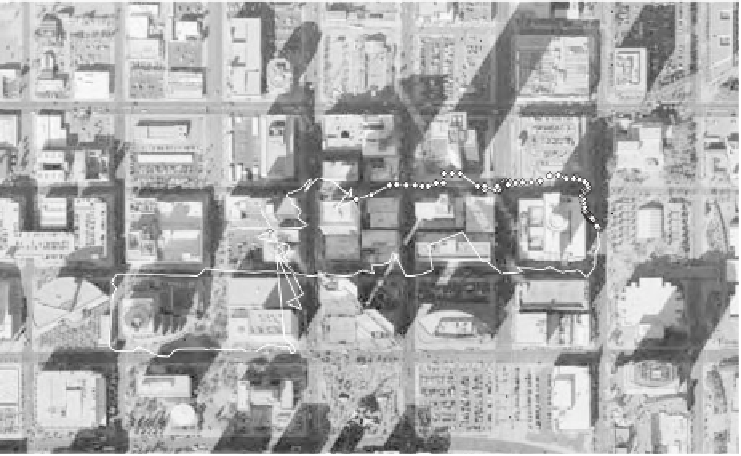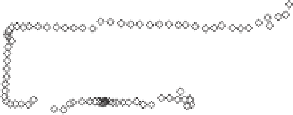Global Positioning System Reference
In-Depth Information
with 8 to 12 channels should be used. The receiver should have rapid signal reacqui-
sition to minimize the effects of urban canyon signal blockage from buildings and
structures. The removal of SA has had a large impact on the accuracy of low-cost
GPS sensors, but differential GPS is sometimes still used to improve the accuracy. A
separate radio can be used to receive differential corrections, such as the RTCM cor-
rections (see Section 8.5) broadcast by the NDGPS service in the United States (see
Section 8.6.1.1). Some newer GPS receivers have the ability to directly acquire cor-
rections from WAAS in North America. As discussed in Section 8.6.1.2, WAAS is a
free service and adds little cost to the GPS receiver. The improvement in accuracy
due to WAAS is not dramatic now that SA has been turned off; however, the WAAS
integrity information may warrant its use.
GPS signal blockage in urban canyons and in parking garages can still severely
impact the availability of GPS positions. Figure 9.21 shows the results of a GPS drive
test in downtown Phoenix, a moderate urban canyon environment. Figure 9.22
shows the results of a GPS drive test in downtown Chicago, a severe urban canyon
environment due to the taller and more numerous buildings. The GPS receiver used
is a commercially available conventional 12-channel C/A code receiver and the posi-
tioning is determined by least squares with no filtering applied in the position
domain. Of course, some level of filtering and the use of a high-sensitivity receiver
design (whose enhanced acquisition capabilities are discussed in Chapter 5) can be
expected to improve the performance. As can be seen, there are several position
jumps and gaps, which are caused by signal blockage and reflection due to the tall
buildings. In the moderate urban canyon, the jumps are as large as half a block, or
50-70m, and there are at least a few position fixes in each block. In the severe urban
canyon, the jumps reach 500m and sometimes the receiver goes a block or more
without a position fix. Clearly, it is highly desirable to augment the performance of
GPS with additional sensors and filtering methods. Integration of one or more of the
529
Polk St.
479
429
Van Buren St.
379
329
279
Monroe St.
229
Start
179
Adams St.
129
79
29
Washington St.
−
21
−
71
Jefferson St.
−
121
−
113
−
63
−
13
37
87
137
187
237
287
337
387
437
487
537
587
637
687
737
787
Easting (10m divisions)
Figure 9.21
GPS performance in moderate urban canyon (Phoenix).





































Search WWH ::

Custom Search